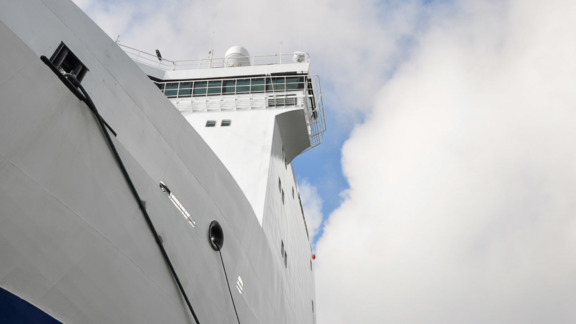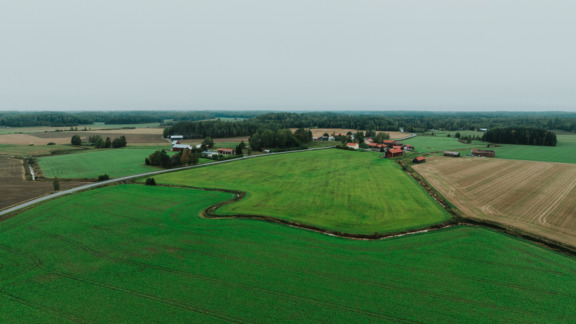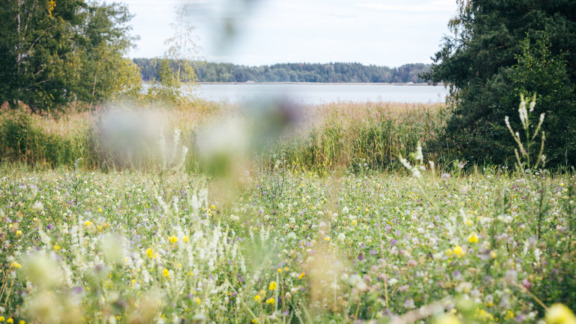Strategic research as part of Finnish EU Presidency
The Carbon Action platform’s stn MULTA -project delivered strategic research for all senses during the EDSCE19 Circular Economy Days, which were organized as part of the Finnish Presidency of the Council of the European Union. The days included both national and international top research, science-based art, food appropriate for the theme, and practical policies. Lastly we got to dig our hands in the soil.
The stn MULTA project, funded by the Strategic Research Council at the Academy of Finland and part of the Carbon Action platform, researches and develops methods to accelerate and scientifically prove soil carbon storage. Additionally the consortium advances and tests regenerative, multi-beneficial farming practices that improve soil health, and develops financial and other steering instruments to further the introduction of these solutions in Finland and elsewhere. The goal is to rouse enough actors needed to create systemic change. The Carbon Action platform also hosts other projects and has received funding from e.g. Sitra and Maj and Tor Nessling Foundation.
The stn MULTA project was well represented in the Circular Economy Days on 30 September and 1 November 2019, as well as its side-events. Important international connections were made, for example with doctors Leen Gorissen and Jean-François Soussana. Gorissen teaches regenerative thinking in Studio Transitio, and Soussana is one of the leading researchers in soil carbon sequestration, as well as one of the authors of the IPCC’s report on land use. Soussana works in the French National Institute of Agricultural Institute INRA, and he is a partner in the stn MULTA project.
At the start of the Circular Economy Days at Finlandia Hall BSAG and SuMaNu project organized a joint side-event on sustainable nutrient cycling. The link between nutrient cycling and sustainable land management was illustrated well in the high-level panel discussion. The international panel consisted of Sirpa Pietikäinen (MEP), Saara Bäck (Ministry of the Environment), Jean-François Soussana (INRA), Juha Nousiainen (Valio) and Sari Luostarinen (Natural Resource Institute Finland).
The Circular Economy Days opened with three Finnish examples, presented through videos. One of the three was Carbon Action. Among the commentators on stage were Soussana and Hanna Mattila from Sitra. You can watch the Carbon Action video here. Life in the soil was also presented through art at the Finlandia Hall foyer Piazza, with artist and researcher Teemu Lehmusruusu’s work Trophic Verses. Lehmusruusu is also a partner in the stn MULTA project.
On the next day, 1 November., Soussana participated in a public hearing on agricultural land as a solution to climate change mitigation and adaptation, organized by the Committee on Agriculture and Forestry and the Committee on the Environment. Soussana was accompanied by stn MULTA project’s researchers Jari Liski (The Finnish Meteorological Institute), Kristiina Regina (Natural Resource Institute Finland), and Tuomas Mattila (Finnish Environment Institute). Read more here.
The events featured food from the Carbon Action farms. We dived deeper into the world of soil carbon sequestration in a pop-down dinner combining science and art at the Tytyri mine, 110 meters below ground. The evening was completed with tasty food from the Carbon Action farms, presentations by researchers and Lehmusruusu’s art: beautiful mycelium network grew on the walls of the underground dining hall.
On 2 November we felt the need to dig our hands in the soil. As a side-event we traveled to Qvidja farm, which utilizes regenerative farming practices and also functions as an intensive test site for Carbon Action and the stn MULTA project. In the Qvidja’s stone castle Leen Gorissen taught us about nature’s intelligence. The presentation summarized the basic principle of regenerativity: things should be left in a better condition than they were before. Carbon Action puts this into practice by tending soil and its microbes while farming, thus leaving the soil in a better condition. This also helps the soil to sequester carbon. In addition, carbon farmer Juuso Joona and Finnish Meteorological Institute’s researcher Henriikka Vekuri introduced us to the methods and research on site. Juuso familiarized us with different types of soil, and together we also stomped on the damp field, hearing worms burrowing in the soil. Read Gorissen’s interview here.
During this busy week Carbon Action and stn MULTA project participated in an active dialogue and imparted research information to a diverse set of listeners, made lots of new friends both from Finland and internationally, and got good media exposure. Let’s utilize all senses and turn knowledge into action!

Laura Höijer
Content Director, Baltic Sea Action Group



